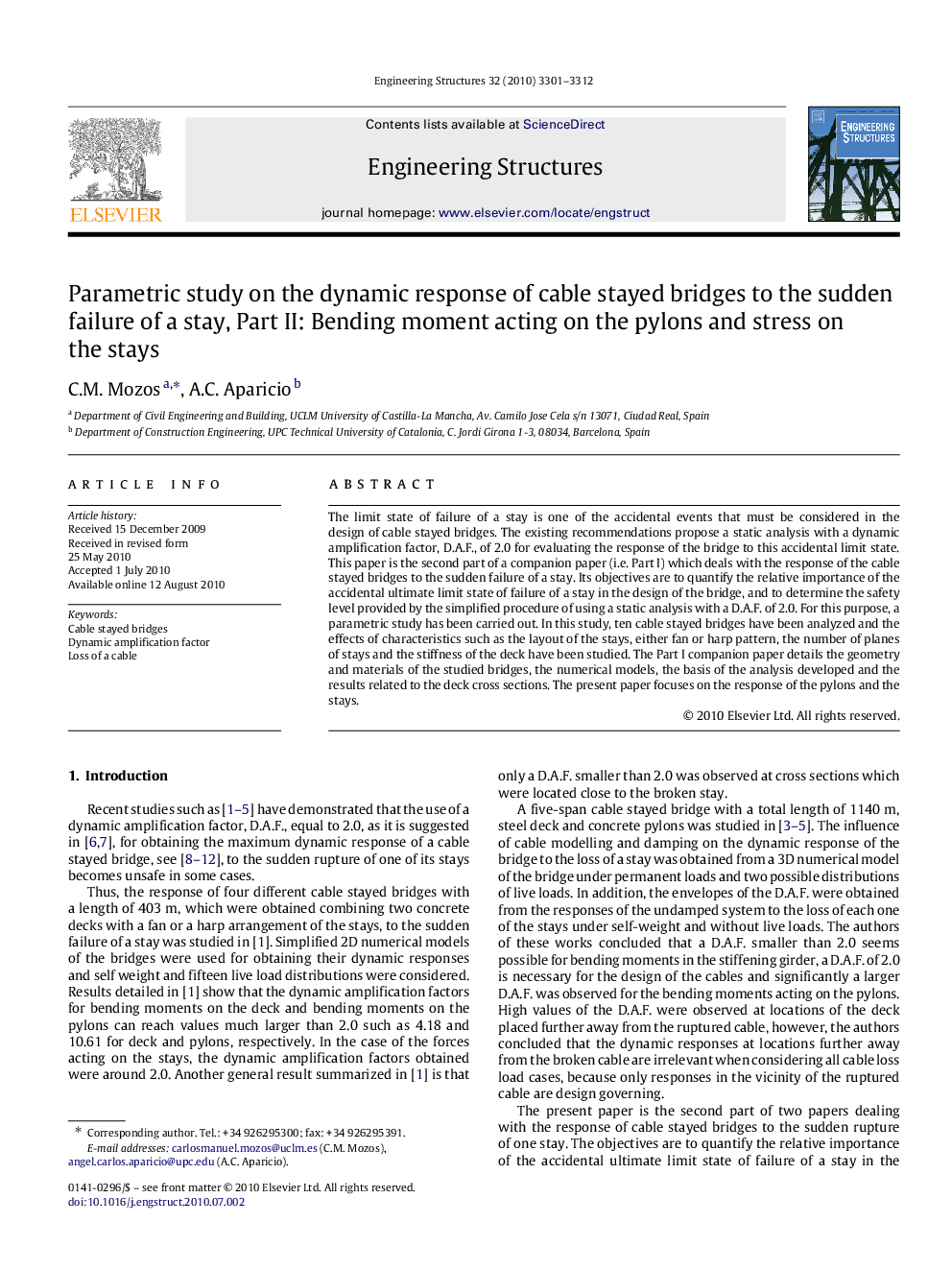| Article ID | Journal | Published Year | Pages | File Type |
|---|---|---|---|---|
| 268112 | Engineering Structures | 2010 | 12 Pages |
The limit state of failure of a stay is one of the accidental events that must be considered in the design of cable stayed bridges. The existing recommendations propose a static analysis with a dynamic amplification factor, D.A.F., of 2.0 for evaluating the response of the bridge to this accidental limit state. This paper is the second part of a companion paper (i.e. Part I) which deals with the response of the cable stayed bridges to the sudden failure of a stay. Its objectives are to quantify the relative importance of the accidental ultimate limit state of failure of a stay in the design of the bridge, and to determine the safety level provided by the simplified procedure of using a static analysis with a D.A.F. of 2.0. For this purpose, a parametric study has been carried out. In this study, ten cable stayed bridges have been analyzed and the effects of characteristics such as the layout of the stays, either fan or harp pattern, the number of planes of stays and the stiffness of the deck have been studied. The Part I companion paper details the geometry and materials of the studied bridges, the numerical models, the basis of the analysis developed and the results related to the deck cross sections. The present paper focuses on the response of the pylons and the stays.
